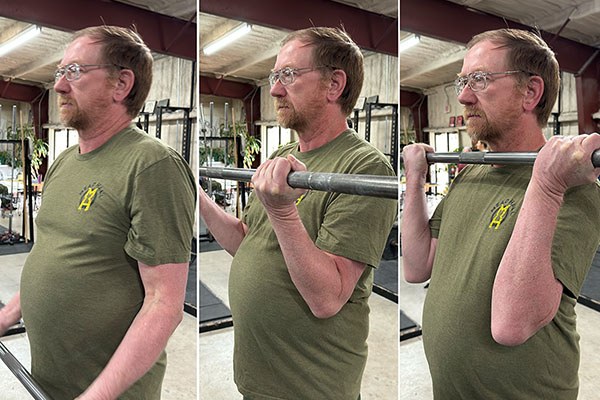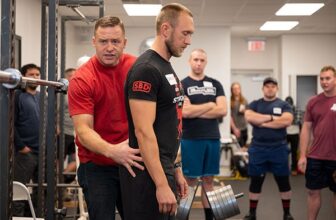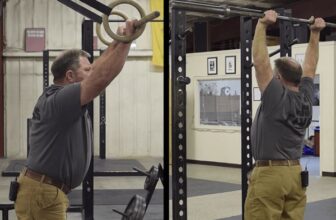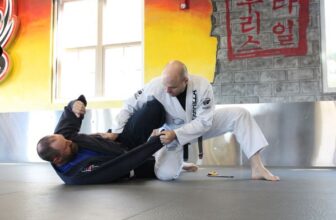
[adinserter block=”2″]
The Barbell Curl in Strength Training
by Mark Rippetoe | March 13, 2024
The classic Barbell Curl is
most closely associated with bodybuilding, since the first thing
everybody thinks about the exercise affecting is the biceps, The
Most Important Human Muscle.
We don’t use the barbell curl in the standard program because there
are better uses for gym time for the typical novice, intermediate, or
advanced trainee. But for a specific demographic they are very
useful: older trainees with a stability deficit can benefit from
barbell curls, since even light weights can challenge their ability
to stabilize a dynamic movement with isometric muscle action. And
this carries over to the other exercises, and to daily tasks.
We
use them in a very specific way – they are taken out of the rack at
the shoulder, like a press, and replaced in the rack like a press.
Take a supine grip at approximately the same width as a press grip,
walk back two steps, lower the bar to fully extended elbows (if
possible, sometimes this mobility is limited) without a pause, and
then curl it back up. Obviously the equipment must match the
trainee’s capacity, so light bars should be available. Then the bar
is walked back into the rack.
This
is not intended to be a strict curl. Not
at all. As the bar
is lowered, the bodyweight of the lifter leaning back slightly
counterbalances the forward travel of the bar as it’s lowered, just
as it is when it is curled back to the start position. Movement
around the hips with tight knees can be coached and improved upon,
allowing for the use of heavier weights. This forces the trainee to
involve essentially all the muscle mass to isometrically stabilize
the spine, hips, knees, and ankles, as well as the active movement of
the load through the bar path. For a 500-squatter this is not as
important as it can be for a 75-year-old retired guy.
Balance
is improved with any barbell exercise performed while standing on the
floor with the barbell in the hands or on the back. If the movement
pattern requires stability, and if you do not fall down during the
set, your balance has been challenged and therefore improved. This
can be an important addition to an older person’s life.
And
granted the fact that this will not ever involve spectacularly heavy
weights for the people we use it for, it doesn’t have to challenge
the limit of your strength – like a deadlift – to produce the
benefits of a full-body barbell exercise.
The
barbell curl can thus be a replacement for the clean or the press in
a program for a frail older trainee that has trouble with these
exercises. It is a dynamic movement, but it is not ballistic. It must
be coordinated and focused since all the joints are involved at some
level. It uses the whole kinetic chain from floor to hands, like a
proper barbell exercise should do, but it is accessible to most
everybody with even marginally-healthy shoulders and elbows. Use a
belt for better stability when the weight gets heavy. For older
trainees, it provides a sense of accomplishment that mastering a
whole-body movement provides, while producing carryover to many daily
tasks.
The
barbell curl used this way moves this perfectly decent exercise from
the realm of vanity arm training to useful basic strength training,
and allows the coach to add another movement to the tool kit for an
older training population.
[adinserter block=”2″]
Credit : Source Post






